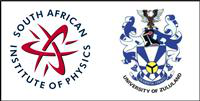Speaker
Main supervisor (name and email)<br>and his / her institution
Coetsee E
coetseee@ufs.ac.za
University of the Free State
Level for award<br> (Hons, MSc, <br> PhD)?
PhD
Apply to be<br> considered for a student <br> award (Yes / No)?
Yes
Would you like to <br> submit a short paper <br> for the Conference <br> Proceedings (Yes / No)?
Yes
Abstract content <br> (Max 300 words)
The luminescent properties of Y2-xO3:Bix=0.002 were investigated and the fluorescence spectra show that the luminescence is stimulated by the emission from two types of centres. These two types of centres were associated with the substitution of the Bi3+ ion for the Y3+ ion in two different sites in the crystal lattice of Y2O3 (with point symmetries C2 and S6 1,2,3,4). The emission of Bi3+ in the S6 site causes blue luminescence with maxima at 360 nm and 407 nm and in the C2 site it gives green luminescence with the maximum at 495 nm. Both these emissions is related to the 3P1–1S0 transition1,3,4,5 in Bi3+. X-ray photoelectron spectroscopy (XPS) indicate that the O2-,Y3+ and Bi3+ ions occupy more than one coordination environment. This proves the two different sites in the Y2-xO3:Bix=0.002 structure. The diffuse reflectance was measured for Y2O3 and Y2O3:Bi and there was no change in the band gap when 0.2 % mol of Bi is doped in the Y2O3 host.
References
(1)L.G. Jacobsohn, M.W. Blair, S.C. Tornga, L.O. Brown, B.L. Bennett, R.E. Muenchausen, Applied physics. 2008, 104,124303.
(2)F. Real, B. Ordejon, V. Vallet, J. Flament, J. Schamps, Chemical physics. 2009, 131,194501.
(3)O. M. Bordun. Applied spectroscopy. 2002, 69,1.
(4)G. Ju, Y. Hu, L. Chen, X. Wang, Z. Mu, H. Wu, F. Kang. Electrochemical society. 2011, 158,294.
(5)X. Y. Huang, X. H. Ji, Q. Y. Zhang. The American ceramic society. 2011, 94, 833.

